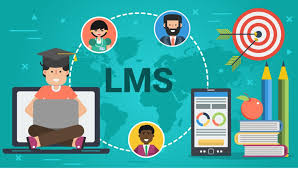Choosing the right learning management system is crucial for delivering effective training and education. Whether you’re part of a university, a small business, or a large corporation, selecting an LMS with the right features can significantly enhance the learning experience and administrative efficiency. With so many options available, it’s important to know which features are essential to ensure long-term success.
User-Friendly Interface That Supports Easy Navigation
One of the most critical features of a learning management system is a user-friendly interface. A complicated or cluttered dashboard can lead to user frustration, which negatively affects engagement and productivity.
-
Learners should be able to easily find their courses and assignments.
-
Administrators should manage users, content, and reports without needing technical knowledge.
-
A clean, intuitive design boosts adoption and reduces the learning curve.
A well-designed interface encourages consistent use and minimizes the need for frequent technical support.
Responsive and Mobile-Friendly Platform
Modern learners expect the flexibility to access content from various devices. That’s why a mobile-friendly LMS is essential.
-
Responsive design ensures that courses look great on desktops, tablets, and smartphones.
-
Learners can access training materials anytime and from anywhere.
-
Offline access is a bonus feature that allows learning even without an internet connection.
A mobile-compatible system ensures that users are not tied to one device, which is especially beneficial for remote learners and employees on the go.
Robust Course Management and Content Delivery Tools
The heart of any learning management system lies in its course management features. These tools allow administrators and instructors to create, update, and organize content efficiently.
-
Upload content in multiple formats including video, PDFs, SCORM, and HTML5.
-
Use templates to design structured courses with modules and quizzes.
-
Schedule course releases and automate notifications.
Additionally, a strong LMS allows content reuse and version control, which is vital for organizations with evolving training programs.
Advanced Tracking and Reporting Features
Analytics and reporting are key to measuring the effectiveness of your learning strategy. A good LMS provides real-time tracking of learner progress, course completion, and assessment results.
-
Generate custom reports on individual or group performance.
-
Use dashboards to monitor course engagement and drop-off rates.
-
Export data to other systems or formats like Excel or CSV.
With insightful analytics, educators and HR teams can make data-driven decisions to improve course design and learning outcomes.
Integrated Communication and Collaboration Tools
A high-functioning learning management system should promote interaction among learners and instructors.
-
Discussion forums, chat rooms, and comment sections improve engagement.
-
Announcements and message boards keep everyone informed.
-
Email and push notifications support real-time communication.
These tools replicate classroom-like interaction and help create a dynamic learning environment even in virtual settings.
Assessment and Feedback Mechanisms
An LMS must support a variety of assessment formats to evaluate learner understanding and provide feedback.
-
Quizzes, multiple-choice questions, essays, and drag-and-drop options.
-
Randomized question banks to prevent cheating.
-
Automated grading for quicker feedback.
-
Manual grading for assignments requiring deeper evaluation.
Feedback loops, such as review comments and grades, help learners improve and instructors refine their content.
Certification and Compliance Management
For many organizations, especially those in regulated industries, certification is non-negotiable. An LMS that offers built-in certification and compliance tracking can simplify many processes.
-
Generate certificates automatically upon course completion.
-
Set expiry dates and renewal reminders for certifications.
-
Track learner compliance with mandatory training modules.
This feature is especially useful in healthcare, finance, and manufacturing sectors where ongoing compliance is essential.
Scalability and Integration Capabilities
Your learning needs will grow over time. An LMS should be scalable to accommodate new users, content, and integrations.
-
Integrate with existing HR software, CRM, and other tools via APIs.
-
Support single sign-on (SSO) for ease of access.
-
Grow from a few dozen to thousands of users without system slowdown.
The ability to integrate ensures a seamless flow of data across your organization’s systems.
Customization and Branding Options
An LMS that reflects your organization’s branding creates a professional and consistent learning experience.
-
Customize logos, colors, and themes to match your corporate identity.
-
Personalize dashboards for different user roles.
-
Create user-specific learning paths based on roles or job titles.
Customization helps align the LMS with your organizational culture and boosts learner engagement.
Multi-Language and Localization Support
For global organizations, multi-language support is a critical feature. A versatile LMS allows you to offer courses in multiple languages to serve diverse teams.
-
Translate system menus, navigation, and content easily.
-
Support date, time, and currency formats for different regions.
-
Enable location-specific settings and legal requirements.
Localization improves accessibility and learner comfort in multinational training programs.
Automation and Workflow Rules
Modern LMS platforms offer automation tools that save time and reduce manual work.
-
Automatically enroll users in courses based on roles or teams.
-
Trigger email reminders for upcoming deadlines or incomplete tasks.
-
Schedule report generation and delivery to key stakeholders.
With automation, administrators can focus on strategy rather than repetitive tasks.
Secure Access and Data Protection
Security is essential, especially when handling sensitive learner data. A secure LMS should provide:
-
Role-based access control to restrict sensitive features.
-
Data encryption to prevent unauthorized access.
-
Regular system backups and audit logs.
Compliance with GDPR, HIPAA, or other privacy standards ensures legal protection and user trust.
Gamification and Engagement Features
Adding gamification elements to learning increases motivation and participation.
-
Award points, badges, and certificates for completing tasks.
-
Create leaderboards to foster healthy competition.
-
Use game-like elements to make learning more enjoyable.
Gamification transforms dull training into an engaging and rewarding experience.








